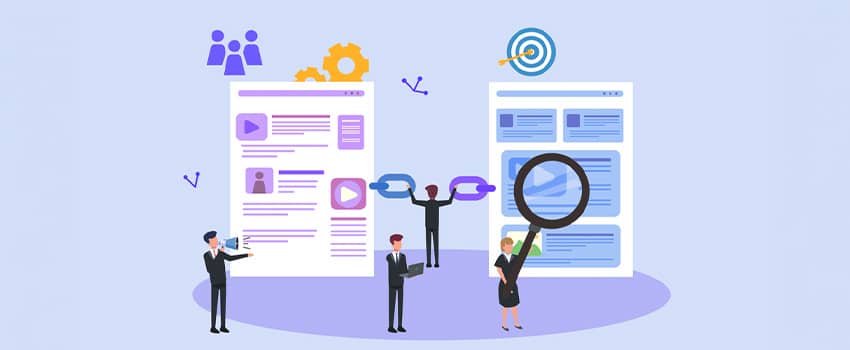
In the digital world, businesses rely on search engine optimization (SEO) to drive traffic and boost sales. But for SEO to work, you need to measure its performance and understand the impact of your strategies. Tracking the right metrics is key. It can show you what’s working and where you need to improve. This guide looks at 6 SEO metrics your marketing team should focus on for long-term success.

The Importance of SEO Metrics in Marketing Strategies
SEO metrics provide insights. These show how your website performs in search engines. They also show how users interact with your content. And they show how marketing efforts turn into real results. By analyzing these metrics, you can make choices based on data. This improves your digital marketing. It also makes the customer experience better. Without this data, it’s very hard to refine your approach. It’s also hard to prove the value of your SEO work.
Let’s look at 6 SEO metrics that your marketing team should care about. These metrics can help you understand how your website is performing. Tracking these metrics can show you areas to improve your website. This can help you reach more customers and grow your business.
Benefits of Quantity-Focused Approach
Focusing on quantity in content marketing means making a lot of content. The goal is to keep your audience engaged all the time. This “more is more” approach means creating a high number of content pieces. Imagine you’re a news outlet. You don’t just post one story a day. You’re always updating with new content. This keeps readers coming back. It increases your chances of getting their attention.
Increased Traffic and Engagement
One of the primary benefits of producing so much content is the potential for increased traffic and engagement. It’s simple math: more content means more opportunities for people to find and interact with your brand.
Think of it like casting a wide net in the ocean of social media. The more posts you have, the higher the likelihood of getting likes, shares, and blog comments. Each piece of content is another chance to appear in a search result, potentially driving more visitors to your site.
More Opportunities for Search Engine Rankings
Creating more content gives you more chances to rank well in search engines. It’s like buying more lottery tickets – the more you have, the better your chances of winning.
Each piece of content may help people find you on search engines. Covering many topics increases your chances of ranking for various keywords. This can help you appear on the top page of Google for multiple searches. This expands your online presence and visibility.
Benefits of Quality-Focused Approach
While having a lot of content is good, the power of quality content shouldn’t be ignored. Creating content that truly connects with your audience can bring great long-term benefits. Imagine you’re a chef. Would you rather serve many so-so meals or create a few amazing dining experiences? In content marketing, quality is key.
Brand Differentiation and Trust-Building
High-quality content helps you stand out online. It’s like being the one fancy restaurant in a sea of fast-food places. When you consistently provide useful information, people see you as an expert. This builds trust with your audience. They view you as a reliable source, not just a content creator. Over time, this trust can turn into brand loyalty. Your content then becomes a powerful tool for any brand.
Long-Term Traffic Growth
Quality content lasts longer. Viral posts come and go quickly. But a well-researched, detailed article can keep drawing visitors even after it’s published.
Think of it like planting a tree. At first, it grows slowly. But over time, it becomes a strong, fruit-bearing asset. Similarly, good content can be an ongoing source of organic traffic, leads, and sales. For example, a free guide on a relevant topic can attract visitors for a long time. This shows your expertise and provides value to your audience.
1. Organic Traffic: The Lifeblood of Your Online Presence
Organic traffic means people find your website through unpaid search results. This shows how well your SEO is working. Paid ads can bring quick results but need a lot of money. Organic traffic grows naturally through good content, relevant keywords, and a well-structured website.
Why It’s Important:
- Organic traffic shows how well your SEO is working. It means your website can rank high for important search terms. This shows your SEO strategy is attracting the right people.
- Increased search engine visibility means more chances to turn visitors into customers.
- Tools like Google Analytics and SEMrush let you track your website visitors. You can analyze patterns in how people use your site and where they come from.
How to Improve It:
- Focus on creating content that meets the needs and interests of your audience. Ensure the content addresses what they are searching for. This will improve the quality of your content and make it more useful to readers.
- Regularly improve your website. Use important words people search for. Make sure your website's technical parts work well.
- Improving your site's speed and making it mobile-friendly can enhance the user experience. This can help you get better rankings. Making your site faster and easier to use on phones and tablets is important. Doing this can improve how your site performs in search results.
2. Keyword Rankings: Assessing Your Visibility on SERPs
Keyword rankings show where your website appears in search results for specific words. Higher rankings mean more people will see your pages. This leads to more visitors from search engines. Tracking these rankings is key to understanding how well your content performs for the words you target.
Why It’s Important:
- Tracking keyword performance shows you which search terms bring users to your website. This helps you focus on high-value keywords that get results.
- Analyzing how your competitors rank for the same keywords gives you insights. You can then change your strategy based on this information.
- Tools like Ahrefs, Moz, and SEMrush can track keywords. They give you real-time data on changes in rankings.
How to Improve It:
- Do deep research on keywords. Find keywords that are not used a lot but have high value.
- Constantly make new content and improve it using those keywords. Keep creating and updating your content using those keywords.
- Keep an eye on seasonal patterns. Update your content to stay relevant and visible.
3. Click-Through Rate (CTR): Measuring Engagement from Search Results
CTR shows the percentage of users who click on your link after seeing it on the search results page. If your CTR is low, it means users are not engaging with your listing. Even though your page ranks well, they are not clicking on it. Improving this can hugely impact the traffic your site gets.
Why It’s Important:
- CTR affects your organic traffic. If people don't click on your link, they won't visit your website.
- Improving your click-through rate (CTR) can help you get more engagement and better conversion rates. When people click on your content, they are more likely to take action. This can lead to more customers or sales. By focusing on CTR, you can make your content more appealing and useful for your audience.
- User metrics, like CTR, show how good your titles and descriptions are in search. They show how people respond to your content. This helps you understand what grabs their attention and interests them.
How to Improve It:
- Write titles and descriptions that grab attention. Make them engaging and relevant to what users are searching for. This helps your content show up in search results.
- Use rich snippets, like review stars or FAQs. This helps your listing stand out.
- Ensure your website links are easy to understand. Use simple, clear words in the links. This helps users know what they will see when they click the link.
4. Bounce Rate: Understanding User Behavior on Your Site
Bounce rate shows how many visitors come to your website and then leave without doing anything else. A high bounce rate means your content may not fit what visitors want. Or it could mean your website design or features make them leave too soon.
Why It’s Important:
- Ensure your landing pages match what people search for.
- Improve your website's page loading speed. This prevents users from leaving before the content loads. Fast loading times help keep users on your site.
- Improve the site's navigation. This makes it easier for users to find what they need. Use clear and simple text. Break long sentences into shorter ones. Avoid complex words. This helps users understand the content better.
5. Backlink Profile: Building Authority and Trustworthiness Online
Backlinks are links from other websites to your website. They are very important for SEO. Strong backlinks show search engines that your website is reliable and trustworthy. Backlinks from high-authority websites are most valuable. They boost your domain authority and improve your rankings.
Why It’s Important:
- Backlinks are like votes of confidence from other websites. These votes tell search engines that your content is valuable. They show that your content is worth linking to.
- Analyzing your backlink profile uses tools like Majestic or Ahrefs. This helps you find chances to build more links. It also improves your SEO. These tools show you how your backlinks compare to competitors. This lets you make a plan to get more high-quality links. Building more links can boost your website's search rankings.
- A solid link building plan is key to boosting your website's domain authority. This helps your site rank higher in search results.
How to Improve It:
- Create great content that gets backlinks naturally. This includes things like infographics, detailed guides, and industry research.
- Reach out to respected websites in your field. Ask if you can write guest posts for them. This lets you connect with their audience. It also helps boost your website's credibility.
- Monitor your backlinks often. Disavow low-quality or spammy links. These links can harm your SEO efforts.
6. Conversion Rate: Turning Traffic into Tangible Results!
While getting more people to your website is important, the real goal of SEO is getting those visitors to take action. Conversion rate shows how many visitors complete a desired action, like buying, signing up, or subscribing. This tells you how effective your website is at turning visitors into leads or customers.
Why It’s Important:
- A high conversion rate shows your SEO efforts are effective. They not only bring in traffic but also produce real business results.
- It helps you know which pages or channels bring the best leads from organic traffic.
- By tracking conversions, you can improve your SEO work to get better returns. Measuring conversions shows you what's working so you can focus on those areas. This helps you get more value from your SEO efforts.
How to Improve It:
- Focus on improving your website. Try A/B testing different calls-to-action (CTAs), forms, and landing pages. This can help you get more conversions.
- Simplify the steps for visitors to finish what they want on your website. This makes their journey easier. Focus on actions you want visitors to take.
- Ensure your website looks good on all devices. Make it mobile-friendly and responsive. This will improve the user's experience.
The Power of SEO Metrics in Achieving Marketing Success
Monitoring these 6 SEO metrics can help. You can see how well your SEO plan is working. These metrics show your organic traffic, keyword rankings, CTR, bounce rate, backlinks, and conversion rate. Your marketing team can use these to check performance. This helps them make good choices and keep improving your SEO.
By knowing these important numbers, your marketing team can use SEO fully. This can lead to long-term success for your business.




